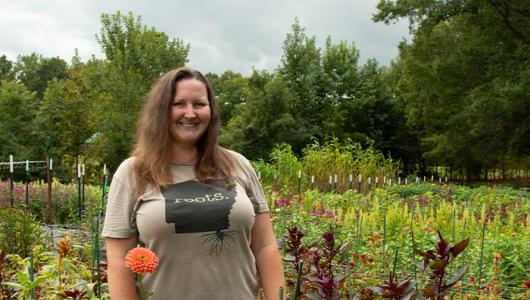This Friday meet Mark Magura of Starke County, Indiana. Mark, and his wife, Amy, have worked hard over the last three years to restore more than 200 acres of former farmland back into a wetland and wildlife oasis. The Maguras originally bought the 272-acre plot in the early 2000s and leased 220 acres to a variety of farmers for the first decade.
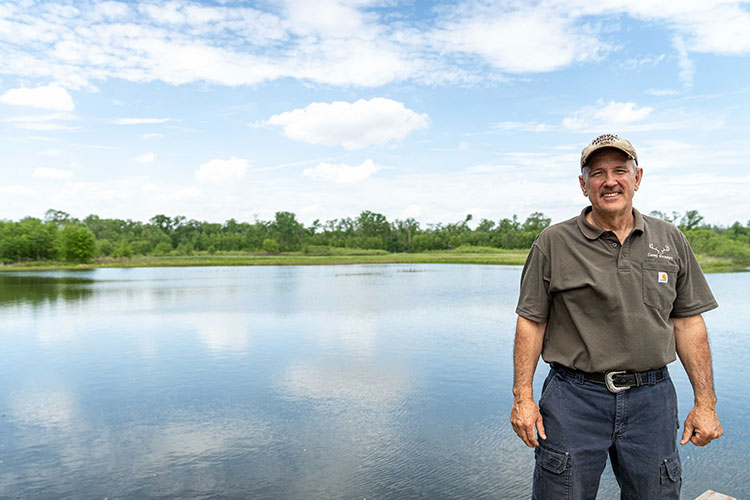
The Road to Restoration
Sitting on the deck overlooking one of the many water-filled areas created during the restoration is where Mark is happiest. Land that had for years been home mostly to corn and soybeans is now flourishing with life. Birds are chirping, frogs are croaking, and a myriad of other sounds fill the landscape.
“If you build it, they will come. This is what we had,” Mark said. “I was put in a situation where we could take a little piece of heaven that gave someone income for many years and turn it back to what was there.”
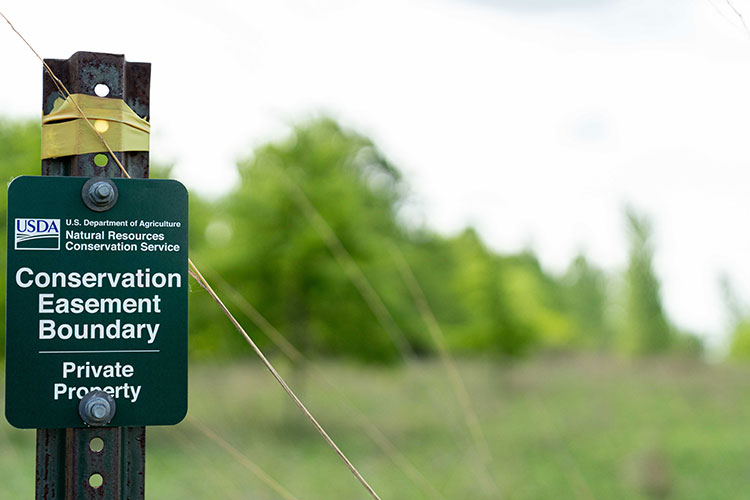
It was during those years that Mark first started working with USDA’s Natural Resources Conservation Service to lay the foundation for wetland restoration on a large portion of the property. He first enrolled the property in multiple Conservation Reserve Program contracts through the USDA Farm Service Agency over the years to address resource concerns before deciding to go forward with the easement designation.
“It's like training wheels, the whole process of going from your first program to your second and then you see things start to form and you start to see quail and pheasant showing up on the property and you start to see more deer,” Mark said. “It's like dating. You find out that this is working well, I think I want to put more into this relationship, and you go forward.”
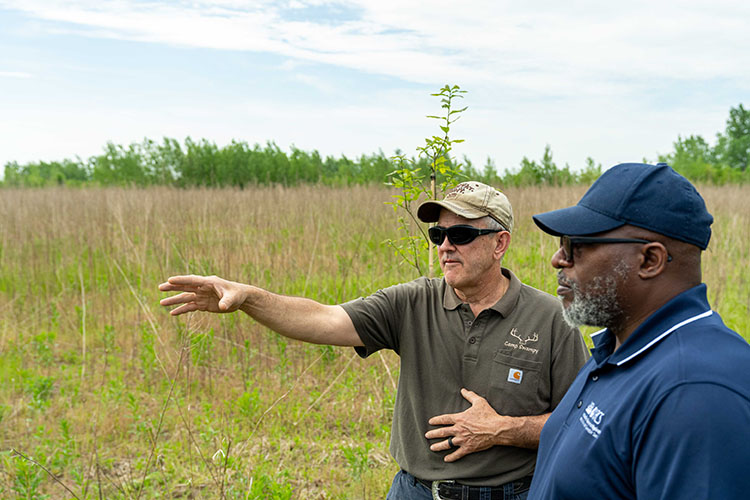
Steward of the Land
In 2018, he began enrolling 200 of the 272 acres he owned into a permanent easement through a wetland reserve easement with NRCS’s Agricultural Conservation Easement Program, starting a three-year restoration process. The restoration included tree plantings and prairie establishment through planting conservation cover as well as installing 16 acres of microtopography (macros).
While Mark says it was a big decision to turn the land into a permanent easement, the decision was ultimately about what was right for the land and for future generations.
“If future generations of my family need it for income, it's gone,” Mark said. “So, it's a big decision to think about, but you've got to look at it as this is going to help everybody in this portion of the country have better chances at seeing wildlife.”
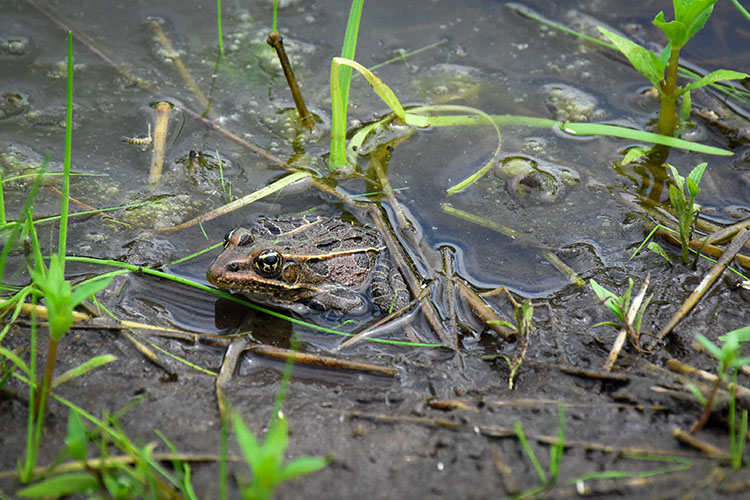
Changes are already being seen on the property. As Mark walked NRCS staff through the site on a warm June morning, quail began to rustle in the underbrush of a restored prairie. A whistle and call from Mark drew them closer before they flew to the trees that had been planted through CRP more than a decade earlier. Later, as they paused beside one of the macros, frogs jumped into the water as birds swam and ate vegetation that had sprouted beneath the surface.
“We're just stewards,” he said. “No one really owns the land. Eventually, I'll be gone and someone else will be in charge of it. By enrolling it in a WRE permanent easement, we can allow this to be present for years to come.”
More Information
Each Friday visit local farms, ranches, forests and resource areas through our Fridays on the Farm stories. Meet farmers, producers and landowners who are working to improve their operations with USDA programs.
USDA offers a variety of risk management, disaster assistance, loan, and conservation programs to help agricultural producers in the United States weather ups and downs in the market and recover from natural disasters as well as invest in improvements to their operations. Learn about additional programs.
For more information about USDA programs and services, contact your local USDA service center.
Brandon O'Connor is a public affairs specialist for NRCS in Indiana.


